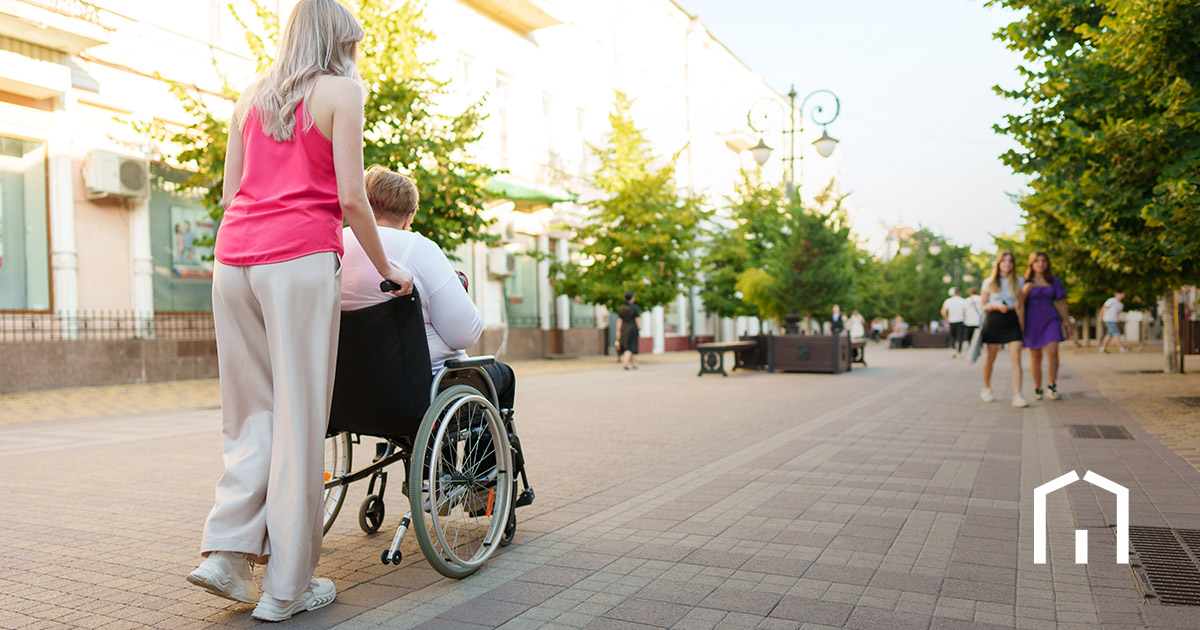

How Communities Can Make a Difference in Fall Prevention
“I would take a walk in my neighborhood, but the sidewalk is rough and uneven”. “I cannot find a direct bus route to my doctor’s office”.
Those are among the many types of challenges seniors may face in their communities. The natural consequences of aging or chronic disease—lessened mobility, corrected vision, problems with balance—can mean that something as simple as taking a walk can be a potential hazard. Falls are a leading cause of injury and death among older adults.
Age-Friendly Communities
With the world’s aging population on a steady rise, designing what are called age-friendly communities has become more crucial than ever. The World Health Organization describes an age-friendly world as “a world in which you want to grow older”. Its website explains:
“Age-friendly environments foster healthy and active ageing. They enable older people to age safely in a place that is right for them; be free from poverty; continue to develop personally; and to contribute to their communities while retaining autonomy, health and dignity”.
Sounds great for people of all ages, right? Here are some of the important elements of an age-friendly community, some of which you may already enjoy where you live:
A walkable community design promotes safe physical activity, thus reducing the risk of falls. Elements such as well-maintained sidewalks, non-slippery surfaces, ramps and handrails all contribute to fall prevention.
Adequate lighting is key to aid visibility, especially during the night. For example, smart streetlights, which automatically adjust to the time of the day, can keep paths well lit for seniors and help with fall prevention.
Housing design also plays a role in fall prevention. Housing features like zero-step entries, single-floor living and wide doorways allow seniors to navigate their homes safely. Bathrooms equipped with grab bars and non-slip mats can significantly reduce the incidence of falls.
Access to quality health care within the community is essential as well. Regular health checkups can help doctors and their patients identify any potential risk factors for falls such as vision problems or balance issues.
Technology such as wearable devices that can detect a fall and send an alert or online resources for healthy aging also help create a safer environment for the elderly.
Fall Prevention: A Community Responsibility
The city of Grand Rapids, Michigan, in the U.S. is one city that is working hard on ensuring it is age friendly. “We have 29 action steps and we are doing quite well”, Jay Steffen, Grand Rapids’ assistant planning director, told Model D magazine in Detroit. “We have the philosophy that if we can make the city work well for older adults, then it will work well for residents of all ages”.
Grand Rapids is also taking the important step of involving local seniors in the planning. Doing so gives city planners invaluable insights into seniors’ needs and preferences. It can also foster a sense of ownership and engagement among seniors, further improving their quality of life. In the U.K., the website of the Older People’s Commissioner for Wales notes, “Older people should be seen as a vital part of society and should be able to have more opportunities to participate in and contribute to our economy and our communities”.
What Else Helps Prevent Falls?
Cities and communities around the world have taken the steps listed above and increased livability for people of all ages. Other efforts that both improve livability and help prevent falls among seniors include:
- Accessible public transportation: Accessible public transportation is critical for seniors who no longer drive. Planners aim to provide well-lit transport options close to residences.
- Green spaces: Access to parks and open spaces encourages physical activity, which can help maintain strength and balance. Planners seek to incorporate easily accessible, well-maintained green spaces into urban designs.
- Road safety: Crosswalks, traffic-calming measures and pedestrian-friendly signal timing are used to ensure seniors can safely cross streets.
- Community centers: Community centers can offer ways for seniors to engage in social activities, exercise classes and health services. Of course, these centers should be accessible and equipped with fall-prevention features.
- Technology integration: In more technologically advanced communities, planners use features like fall-detection sensors in public places and even smart sidewalks that can adapt to the weather and help prevent slips in icy conditions.
Building communities that allow older people to live independently and with dignity is a collective effort for urban planners, health care professionals, technology experts and, most importantly, the seniors themselves. Let your voice be heard if you are concerned about fall hazards and other factors in your community that affect livability.
 Why Right at Home?
Why Right at Home?
- Over 20 years of experience. Right at Home has been providing award winning customized senior care and home care for over 20 years.
- YOUR Caregivers are all part of YOUR Care Team. This means that there is no revolving door of Personal Support Workers and Nurses. With the help of your Care Planner, you choose and get to know them. This leads to an level of care for your loved one that is unsurpassed in our industry.
- Working with government support. Your Care Planner will work to help you find the government supports you are eligible for (if you would like them) and then work to find a solution for the care needs that go above what government and family can do. We will also work around the government care plan so that we are enhancing it.
We help in home, wherever home is to you.
Our Caregivers are always out in the community visiting homes, Retirement Residences, Long Term Care (LTC), hospices and hospitals.



